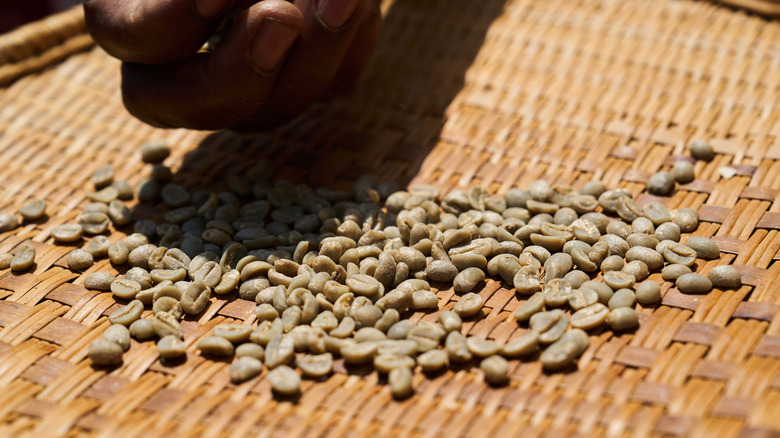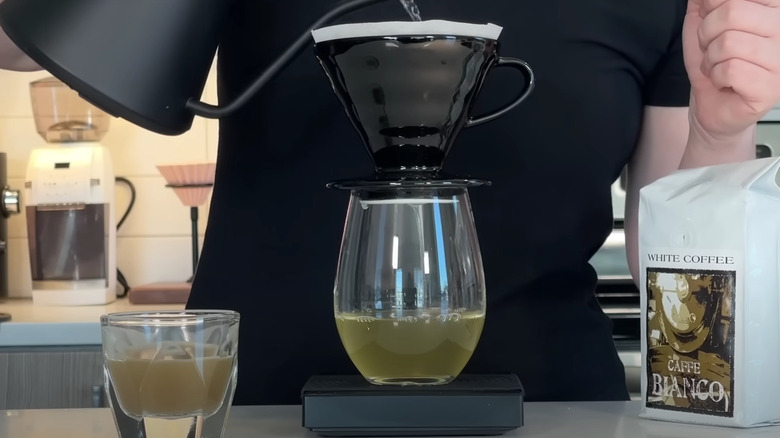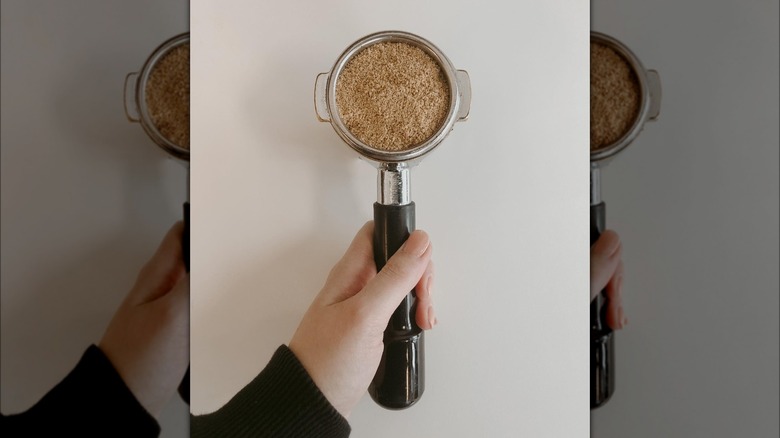White Coffee Is The Perfect Variety For A Sweeter Tasting Brew
White coffee is in, and it is the morning jolt you need if you crave a sweet and nutty brew. White coffee should not be confused with a creamy flat white that tops a shot of espresso with a bit of steamed milk, or an Ipoh Malaysian white coffee where brewed coffee made from beans roasted in margarine and sugar is served with sweetened condensed milk. Instead, white coffee refers to the actual color of the roasted beans, which can be off-white, beige, pale yellow, or even slightly orange. The final brew has a sort of light milky brown, green, or blonde caramel color — though this is not to be confused with Starbucks' blonde roast, which, while light, is roasted more than white coffee.
White coffee starts with green coffee beans just like any other coffee, but they are not roasted for as much time or at as high of a temperature. White coffee gets roasted at about 300 degrees Fahrenheit, while dark roast coffee can be roasted at up to around 475 degrees Fahrenheit.
What does white coffee taste like?
The low and slow roasting treatment makes the taste of white coffee milder and sweeter. It allows the natural and more subtle flavors of the green beans to come through rather than the bold, toasty, cooked flavors that are characteristic of more heavily roasted coffee. Once brewed, white coffee is known to have a light body, smooth texture, and mild taste. Webstaurant Store explains, "The sweetness comes from the natural sugars in the lightly roasted beans, while the nuttiness comes from the natural oils retained during the roasting process." White coffee tends not to be very bitter, overpoweringly strong, or acidic — slightly sweet thanks to the uncaramelized sugar. Some say it tastes a little peanutty or even grassy, like a quality green tea.
While some roasters claim that the longer a bean is roasted, the less caffeine it has, that isn't quite true. Roasting won't reduce caffeine content; it impacts the size of the bean (per Healthline). The longer a bean roasts, the larger it becomes. If you're measuring your morning coffee out by volume rather than weight, lighter roasts will have more caffeine as you'll get more beans per cup. If you measure by weight, you'll get pretty much the same caffeine. But don't worry if you're aiming for less caffeine – caffeinated drinks won't actually kill your hydration.
How to make white coffee at home
Because white coffee beans are roasted for less time, they are far less brittle than other varieties of coffee beans. That means that they are too hard for the coffee grinders most folks would have in their at-home coffee station. An industrial-grade grinder is necessary to create a brewable fine powder, which is why white coffee is typically sold already ground.
When making white coffee at home, opt for a brewing system that operates using pressure, such as a Moka coffee pot, AeroPress, or a mechanized espresso machine, if you have it. Drip-style methods will still work, but you may need to increase the amount of coffee grounds you use. Treat the white coffee grounds pretty much the same as you would traditionally roasted coffee — measure the grounds, pour a bit of water on them to bloom them, and brew the coffee according to the directions of whichever system you are using. Keep in mind that white coffee behaves somewhat differently, and the texture of the grounds is more dense and coarse, so it may take a little trial and error to perfect your cup of joe.



